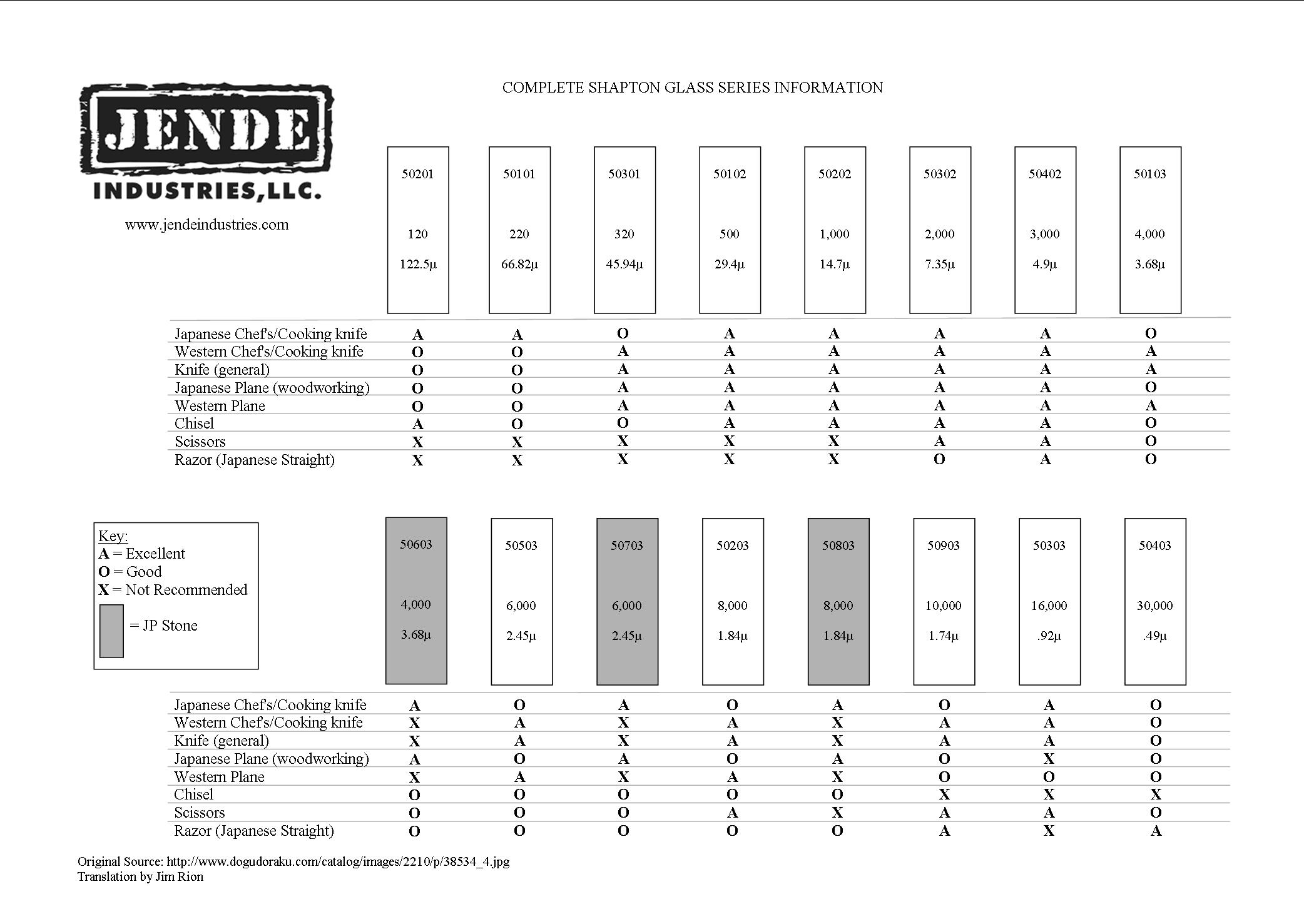I was asked to put together something to help people discern between the different Shapton product lines by Locutus, a respected member of
The Knife Forums. This is my first installment.
First, a little background information. I have been a Shapton retailer sine 2004, and have used the Professional and Glass Series almost exclusively in that time – by choice. I sharpen many different things outside of the forum’s normal Japanese/Western kitchen and EDC knives, including woodworking tools, reed knives, straight razors, beautician and medical scissors, periodontal instruments, and orthodontic cutters and pliers.
OK, so first thing first – Shapton has 2 main product lines in the US –
Professional and
Glass. There are several more lines – some have been discontinued over the years and others are not readily available in the US. (I hope to cover them in another installment, later.)
The Professional series have 10 stones, with some specifically formulated for carbon or stainless steels(or Japanese or Western knives and planes). They are really designed to be used in a
coarse to
medium to
fine progression.
Coarse:
#120 – (White) – This stone is very aggressive, but tends to need a lot of maintenance to keep it flat and to keep it aggressive. (IME, Chisel users like this stone remove chips, but I generally don’t recommend it for kitchen knives)
#220 – (Moss Green) This stone is “harder” and is formulated for stainless steel.
#320 – (Dark Blue) This stone is “softer” and is formulated for carbon steel.
Medium:
#1,000 – (Orange) This stone is labeled
Coarse/Medium, and is formulated for stainless steel.
#1,500 – (Lighter Blue) This stone is formulated for carbon steel and IMO, is a great 1 stone solution for minor repairs and edge maintenance.
#2,000 – (light Green) This stone is formulated for both carbon and stainless, and is one of my favorite, although very under used, stones.
Fine:
#5,000 – (Wine Red) This stone is pivotal in the Shapton pro series. It is a dense stone that produces the first mirror finish. It sets the stage for the finer polishing stones while producing an excellent edge for most conventional knives and tools.
#8,000 – (Melon Green) This stone takes the 5K to the next level. I find it “rubby”, but yet it always produces a wonderful finish and edge. (While I always recommend going from the medium to the 5K first before going to the 8K, this stone can also be used in a 2K-8K progression.)
#15,000 (Yellow) This stone takes everything even further. It is a “softer” stone and really puts a wonderful finish on an edge. (The Japanese version of this stone is the 12K. The only difference seems to be the packaging. The reasons for the numbering differences are unknown by me, and I do not have the 12K myself. I do not see why only one stone would be different or why each would not be offered in the other’s market.)
#30,000 (Purple) This is a truly wonderful stone, although it is
very expensive. It is dense and hard, and takes sushi knives and razors to the ultimate level.
——
The Glass stones are the second main Shapton stone line. They were specifically formulated to accommodate the cold-hardened Lie-Nielsen A-2 plane blades, which are RC 63. (The Pro series will work on the Lie-Nielsen blades, but at 5K +, the feedback feels a little weird.) The Glass Stone series is considerably softer than the pros (relatively speaking – they are nowhere near as soft as a Norton 4K) in order to keep a steady supply of fresh abrasive to cut through the hard steel.
It should be noted that Shapton stones seem to be aimed at the woodworking market, mainly plane and chisel blades. I won’t expand too much on this in this installment, but the reason I bring it up is because the Glass Stones’ 5mm of abrasive vs. the 15mm on the pros have reduced the weight and cost of the Glass Stones, making them more affordable, and therefore very desirable for many other sharpening applications, such as kitchen knives. The technology for the hard steel also made the Glass stones very attractive to the more exotic steels used in many tactical, fixed blades, custom knives, etc.
With some help from Jim Rion from the
SRP, I was directed a very good chart on a Japanese website that explains what each glass stone is ideal for (and I pretty much agree with). It has been translated below. You’ll note that there are several stones that are not available in the US, and that there are 3 gray colored JP (Japan) Glass Stones.
The “regular” Glass stones are white in color, and in the US come in #220, #500, 1k, 2k, 3k, 4k, 6k, 8k, 16k, and 30k. The gray JP Glass stones are gray in color, and are formulated for carbon steel. The three JP stones are available in the US. (Only the #120, #320, and 10K are not.) In my mind, the JP stones are like the Shapton Pros with Glass Stone technology. As far as I know, there are only the 4k, 6k, and 8k in these JP stones, and that there
is not an entire set of JP stones. (If there is proof otherwise, please let me know!)
While the Pro series was designed to go from coarse, to medium, to fine, the Glass series is pretty much mathematical, with doublings along the whole series. These stones are also broken down by the abrasive sizes in microns, giving a clearer indication of what each stone is doing.
Thanks!






